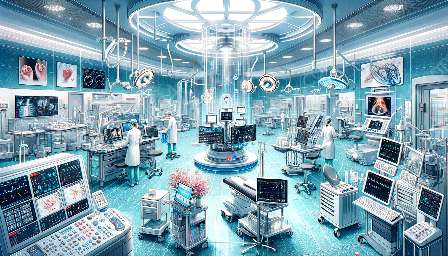Biophysics plays a critical role in understanding the interplay between physical forces, cellular responses, and tissue engineering. This interdisciplinary field sheds light on how mechanical cues influence cellular behavior and the development of innovative medical devices. Let's delve into the role of biophysics in the study of cellular mechanotransduction and its relevance to tissue engineering, as well as its impact on healthcare.
Understanding Cellular Mechanotransduction through Biophysics
Cellular mechanotransduction refers to the process by which cells sense and respond to mechanical forces within their environment. Biophysics provides a framework for elucidating the mechanisms underlying how cells perceive and translate mechanical signals into biochemical responses. This includes studying the properties of cell membranes, cytoskeletal elements, and cell-cell interactions that contribute to mechanotransduction.
Biophysical techniques such as atomic force microscopy, optical tweezers, and microfluidics enable researchers to probe the mechanical properties of cells and tissues at the nanoscale. By leveraging these tools, scientists can investigate the deformation, adhesion, and migration of cells in response to external forces. This deeper understanding of cellular mechanotransduction has wide-ranging implications for tissue engineering and regenerative medicine.
Biophysics and Tissue Engineering
Tissue engineering aims to create functional tissue substitutes by combining cells, scaffolds, and biophysical cues to facilitate tissue regeneration. Biophysics provides crucial insights into the design of biomaterials and scaffolds that mimic the mechanical properties of native tissues. By integrating biophysical considerations into tissue engineering strategies, researchers can enhance the viability, functionality, and integration of engineered tissues.
Furthermore, biophysical stimuli such as mechanical stretching, fluid shear stress, and substrate stiffness play a pivotal role in guiding cell behavior and tissue development. Biophysicists collaborate with bioengineers and medical device experts to develop sophisticated platforms for culturing cells under physiologically relevant mechanical conditions, ultimately leading to more effective tissue engineering strategies.
Impact on Healthcare and Medical Devices
The intersection of biophysics with medical devices has transformative implications for healthcare. Biophysicists contribute to the development of cutting-edge technologies that leverage mechanical principles to diagnose and treat various medical conditions. For instance, advanced imaging techniques based on biophysical principles enable the visualization of cellular and tissue mechanics, providing valuable information for disease diagnosis and treatment monitoring.
Medical devices that harness biophysical concepts, such as microfluidic systems for sorting and analyzing cells, biomechanical sensors for monitoring physiological parameters, and tissue-engineered constructs for regenerative therapies, exemplify the impact of biophysics on medical innovation. These devices not only enhance our understanding of cellular mechanotransduction but also offer novel solutions for addressing healthcare challenges.
Biophysics, Medical Devices, and Future Prospects
The synergy between biophysics and medical devices holds promise for advancing healthcare through personalized medicine, regenerative therapies, and diagnostic tools. By integrating biophysical principles into the design and development of medical devices, researchers and engineers can create innovative solutions that cater to the specific mechanical intricacies of biological systems.
As biophysics continues to unravel the complexities of cellular mechanotransduction and tissue behavior, its synergy with medical devices is poised to drive transformative breakthroughs in healthcare. This convergence represents a compelling avenue for addressing unmet clinical needs and improving patient outcomes.


